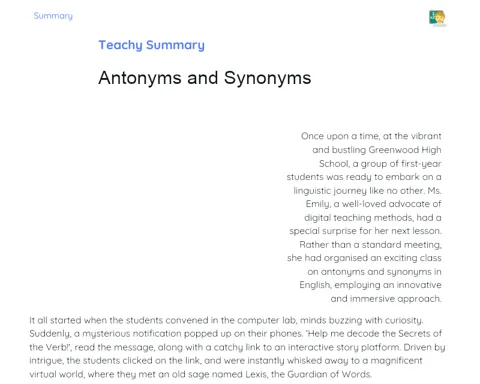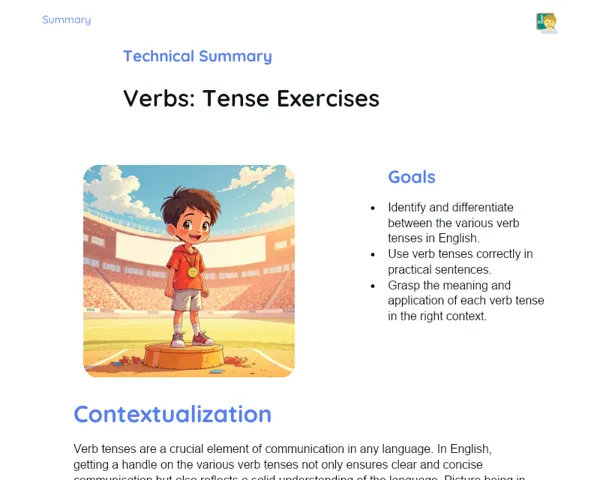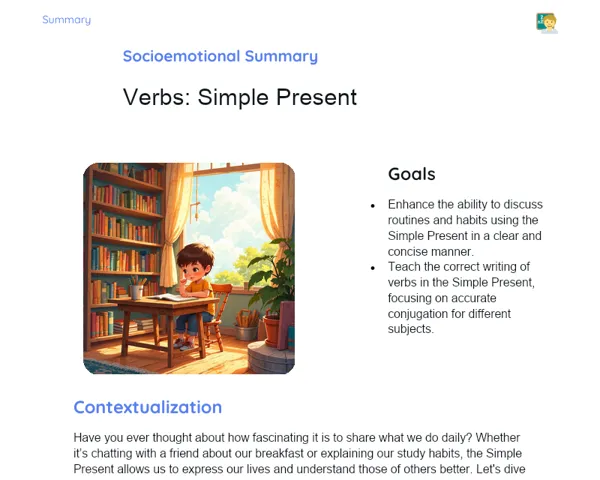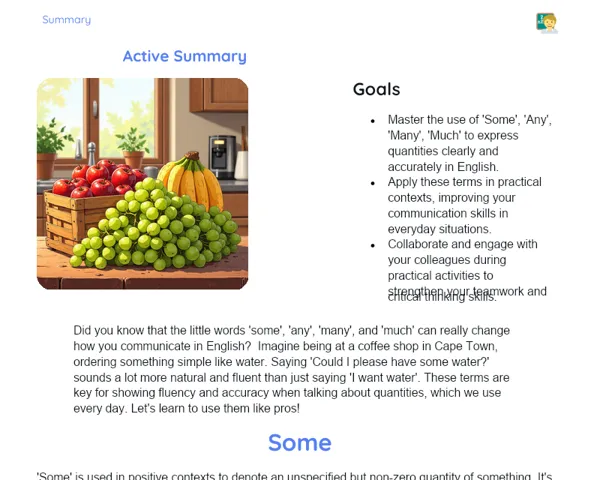Objectives
1. Understand the significance of the verb 'to be' in the English language and how it's applied in various contexts.
2. Develop the ability to correctly use the verb 'to be' in affirmative, negative, and interrogative forms.
Contextualization
Did you know that the verb 'to be' is one of the first things we learn in English and a key building block? It's not just essential for crafting everyday sentences, but it's also used in different situations — from identifying individuals and objects to describing traits and states. For instance, in casual conversation, we might say 'I am happy' or 'He is a doctor.' In more formal settings, such as police reports or contracts, the verb 'to be' is absolutely vital. Getting a good grip on this verb sets a sturdy foundation for further progress in your English studies, helping you communicate more effectively in a variety of situations.
Important Topics
Forms of the Verb To Be
The verb 'to be' in English serves to express identity, origin, and states of being. It manifests in three primary forms: am, is, and are. 'Am' is used with the first-person singular (I), 'is' with the third-person singular (he, she, it), and 'are' with the second-person singular (you) and all plural forms (we, you, they).
-
I am a student.
-
She is a doctor.
-
We are friends.
Uses of the Verb To Be
The verb 'to be' is not only for identification but also describes both permanent and temporary states, expresses location, and helps form the passive voice in English. For example, 'He is from Brazil' shows origin, while 'The book is on the table' indicates where an object is situated.
-
She is a teacher. (permanent state)
-
They are happy today. (temporary state)
-
The letter is being typed. (passive voice)
Negative and Interrogative Sentences
In addition to affirmative forms, the verb 'to be' also appears in negative and interrogative sentences. In negative statements, we include 'not' after the verb, like in 'He is not at home.' For questions, we invert the subject and the verb, for example, 'Is she a doctor?'
-
I am not hungry. (negative)
-
Are you happy? (interrogative)
-
It is not mine. (negative)
Key Terms
-
Verb 'to be': One of the fundamental verbs in English, used to express states, identity, origin, and location.
-
Forms of the verb 'to be': Am, is, are, employed according to the grammatical person (I, you, he/she/it, we, they).
-
Usage in affirmative, negative, and interrogative sentences: The verb 'to be' is flexible for constructing various sentence types, ensuring clear and effective communication.
For Reflection
-
How can using the verb 'to be' correctly enhance clarity in communication, especially in formal contexts?
-
Why is it essential to comprehend the different forms of the verb 'to be' and how they apply in various situations?
-
How can mastering the verb 'to be' aid in the acquisition of other English verbs?
Important Conclusions
-
We reflected on the pivotal role of the verb 'to be' in English and its necessity for constructing sentences in diverse contexts, from casual conversations to official documents.
-
We examined the three main forms of the verb 'to be' (am, is, are) and how they pair with different pronouns across various time frames and situations.
-
We discussed how the apt use of the verb 'to be' can bolster clarity in communication and emphasized the importance of mastering it as a foundation for grasping all aspects of English grammar.
To Exercise Knowledge
Keep a diary for a week, utilising the verb 'to be' in various contexts — detailing your daily activities, feelings, and future plans. Aim to incorporate all forms of the verb 'to be' and review to ensure accuracy.
Challenge
To Be Detective Challenge: Tune into an episode of your favourite series in English and track every instance the verb 'to be' appears. Sort its usage into affirmative, negative, or interrogative. Share your discoveries in our next class!
Study Tips
-
Experiment with language apps that feature grammar exercises. Many offer dedicated sections for the verb 'to be' to improve both understanding and application.
-
Create flashcards with different forms of the verb 'to be' on one side and an example use on the other. Regularly review them to aid retention.
-
Watch educational YouTube videos explaining the use of the verb 'to be' across different contexts. This helps in visualising and comprehending the grammatical rules better.



